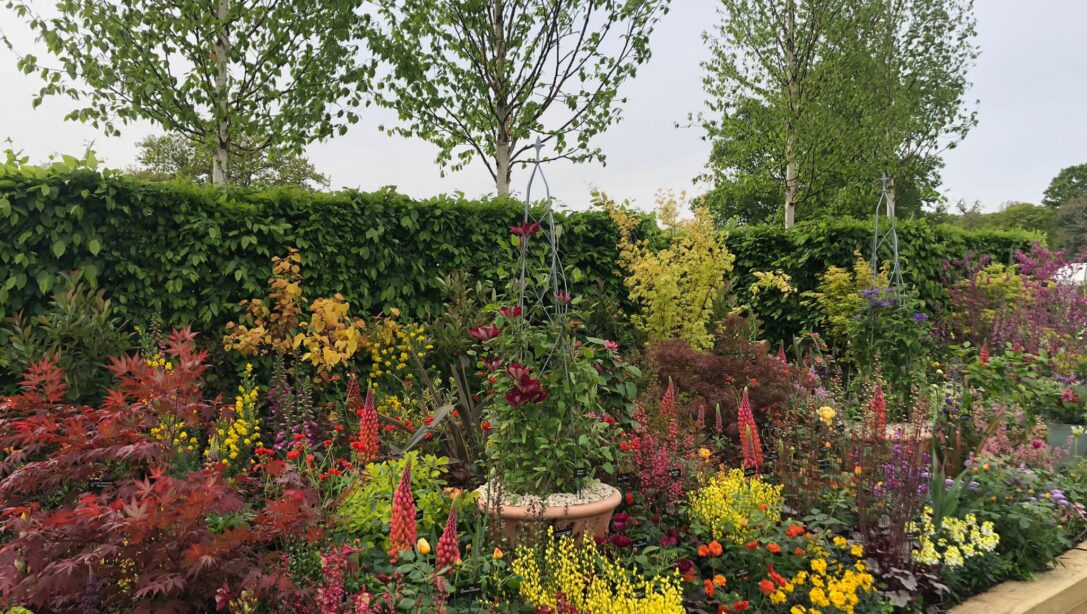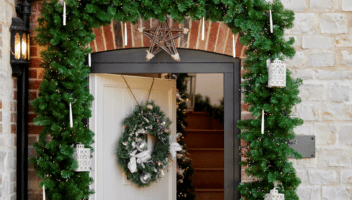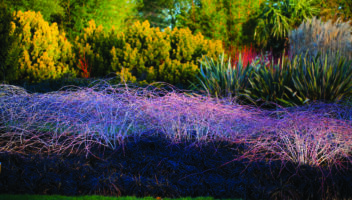As a regular headline partner at BBC Gardeners’ World Spring Fair, held at Beaulieu in Hampshire, we create beautiful garden displays to provide visitors with ideas they can use in their own gardens.
One design for the Hillier Experience at Spring Fair focused on the way two gardening schemes merged, offering a range of garden inspiration. The garden display highlighted both a contemporary garden, showing clean lines and a traditional English garden with the herbaceous planting we all know and love.
In this article we’ll explore the thoughts and specifics behind merging traditional and contemporary design. We’ll also offer guidance on how you can attain both themes within your own outdoor space.
Traditional Meets Contemporary

The possibilities of garden design are endless and to settle upon one certain theme no longer seems quite so simple. There are a lot of factors to consider when designing a garden: the size of the space, the colour scheme and, arguably the most important factor, what the garden will be used for.
Blending styles together will not only form a dramatic and inspiring impact but can also offer the best of both worlds. By combining the two styles, you can achieve the clean, social aspect through outdoor living and the stylish, sleek impressions of the modern with the vibrancy, comfort, and familiarity of the traditional.
The Traditional Garden

The traditional garden reflects the much-loved old English style, bursting with a rainbow of beautiful scent and flora. Drawing on the quintessential and relaxed elements of the traditional, with inspiring historical highlights, it’s the place where you can sit, relax, and appreciate the romance and whimsicalness of the style.
Our space featured a beautiful herbaceous border, filled with bright hues, to welcome the spring season. Taking you on a journey around the colour wheel, a wonderful variety of shrubs, roses, and intersected plants of the same shades created a seamless transition through the border.
Travelling through white and yellows to vibrant pinks, purples, and reds concluding in the strong shades of russets and dark flora, the border housed an authentic Gertrude Jekyll design depiction. Clematis obelisks stood tall to help form the passage of beauty. Acers were used for height to help create the wave of colour. We proudly positioned a Lutyens bench in the traditional garden, correlating Edwin Lutyens’ imaginative and architectural sophistication with the emblematic Jekyll planting design that was instrumental in the arts and crafts movement.

Key Plants to Consider for a Traditional Garden:
- Clematis,
- Roses,
- Lavender,
- Peonies,
- Geum.
The Contemporary Garden
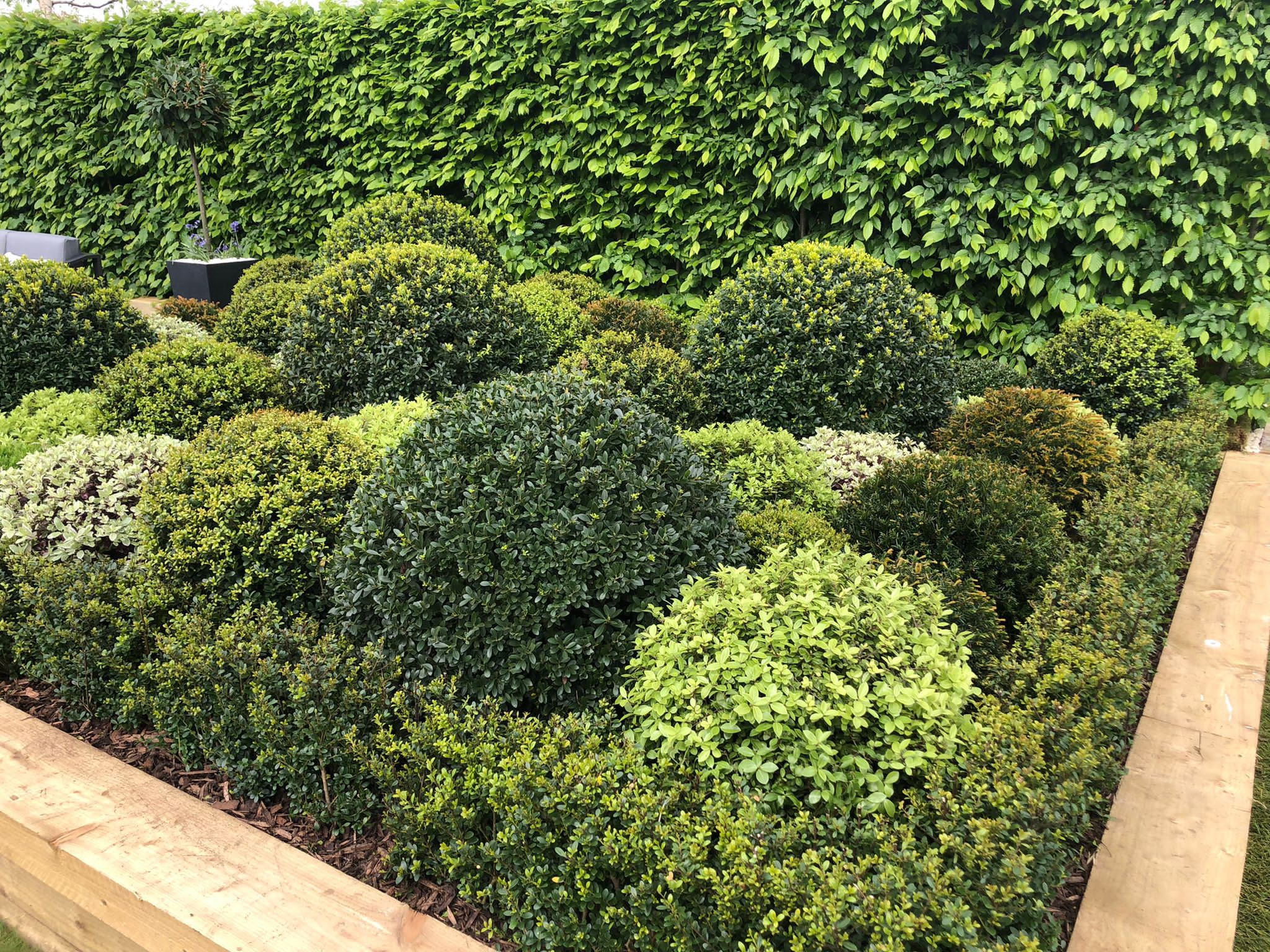
Our contemporary garden drew upon the structural design to create an instant impact and the movement towards modern inspiration. Focusing on the possibilities of outdoor living with defined lines and clean composition, this is the space to entertain and enjoy the social side and uniformity of a contemporary garden.
The contemporary area of your garden could feature a beautiful cloud garden. It is filled with a range of green plants of several different sizes, to form the illusion. Topiarised into a uniform shape, each rounded plant integrates together to create a stunning and impactful display. With wonderful and regular plantings of phormiums and cordylines and fantastic highlights of the contemporary style through modern dining furniture, porcelain paving and oversized pots, this area would feel fresh, slick and very sharp.
A delicate wildflower meadow, with uniform edges and pruned hedging, creates a dynamic contrast in colour and appeal, while still maintaining the formalities of the contemporary display.
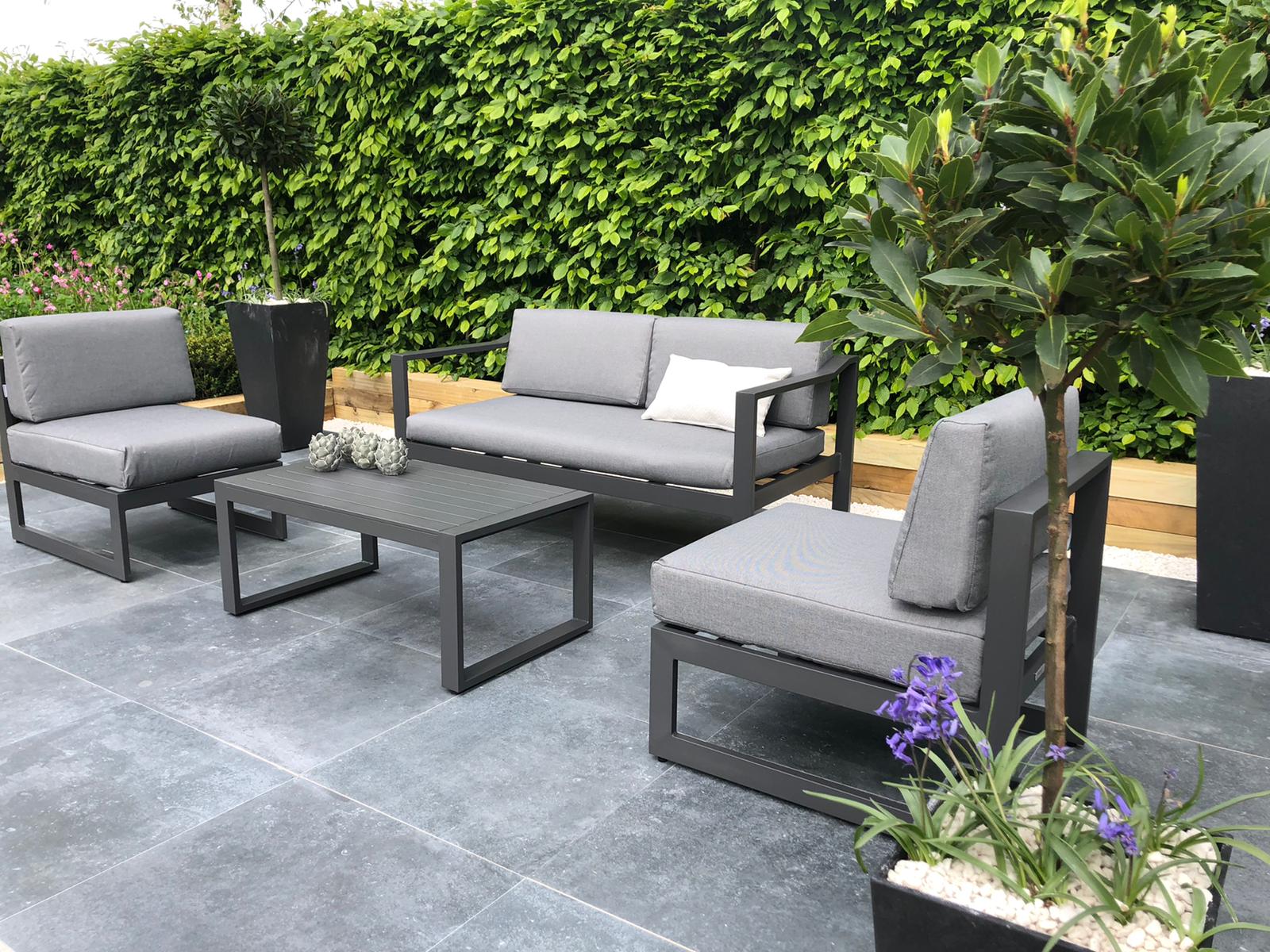
Key Plants to Consider for a Contemporary Garden:
- Pittosporum,
- Box,
- Wildflower,
- Phormium,
- Cordyline.
Wildlife In Your Garden

Both the modern and contemporary areas have been designed with wildlife in mind. There is a wildflower twist, and many well-known plants for attracting pollinators in the herbaceous border.
To further entice our fascinating wildlife, we have included an eco-friendly bug hotel. The hotel provides shelter for insects and highlights the benefits of upcycled and natural creations. It is built using the materials around us – including old logs, moss, stones, sticks and bricks.
Bug hotels are a wonderful way you can extend your understanding of wildlife. They also add interest into your garden and provide a habitat for all the fantastic creatures.
Tips For The Home Garden

Along with inspiration for the contrast of themes and wildlife attraction, there are plenty of additional tips to incorporate into your own garden:
- Be conscious of the layout of your garden when positioning plants. Right plant, right place remains one of the most important gardening mantras for success!
- A ‘random’ garden is one of the most frequently heard complaints people make about their own planting! The reality is we all tend to buy things we like, which can create a bit of randomness. However, having an overall awareness of colour schemes and flower appearance can alleviate some of that sense of random planting.
- When designing herbaceous borders, play with height and colour variation. Avoid making the border look too uniform as its important to develop a natural flow.
- Consider using plants in containers to easily change or update your look from year to year.
With Thanks to Supporters of the Hillier Experience …



